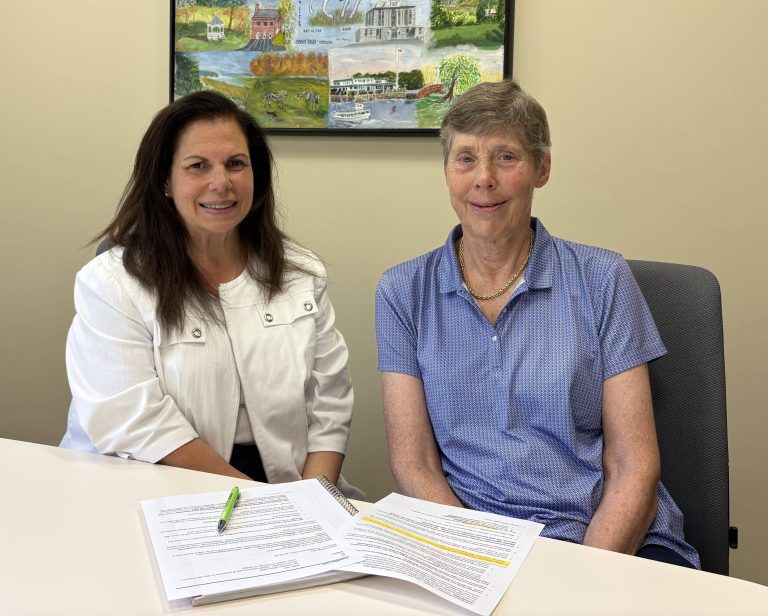

By Paul Silverfarb
Sentinel Editor
Eversource Energy is currently working toward a new proposal on the Greenwich substation to send up to the Connecticut Siting Council, but town leaders are still highly concerned about the options and their impact on the town.
Since the last year, when the Siting Council rejected Eversource’s original plan to build a substation on Railroad Avenue, the energy company has been working with town officials to come up with a different plan.
Earlier this month, the town seemed to have been caught off-guard by a new plan that Eversource came up with, and cited several major concerns.
The new plan, called the “hybrid option,” combines the use of overhead and underground transmission lines that would run from the existing Cos Cob substation to the proposed new location of a substation at 290 Railroad Ave., currently the home of Pet Pantry.
The proposed solution from that plan would cost an estimated $80 million.
A second option, called the “alternative option,” would include an all-underground design that was proposed by the town leaders. It would start at the Cos Cob substation, run through Bruce Park, and end at a new substation, built at 281 Railroad Ave. That address is currently Eversource’s “Pole Yard,” used for storing utility poles.
The cost of the alternative option is estimated at about $100 million.
“Both designs would require modifications to the existing substation in the Cos Cob section of Greenwich,” said Frank Poirot, a spokesman for Eversource. “The strong suggestion that we got from the Siting Council when we first started down this path to work with town leaders, was to come up with something less expensive. We think that we have done that. Once we present this to the Siting Council and formally file it, it will be under the Siting Council’s jurisdiction to decide.”
However, town officials are concerned about the hybrid option, saying that the proposal can put the town the Greenwich into potentially dangerous situations.
“The driver behind the objection, however, is the impact on safety, reliability, long-term cost and the impact to the environment,” said Katie DeLuca, the town’s director of Planning and Zoning. “The placement of the new poles [that bear transmission lines] would require the removal of vegetation in the corridor that protects neighbors from the railroad and I-95, and would have to be located in very close proximity to a sewer force main. Furthermore, should there be a need to address any break in the line or the poles, it could be days of disturbances to Metro North.”
For the above ground work in the hybrid option, steel poles 150 feet high, and possibly higher, would be installed between the Metro North Railroad and Interstate-95 from the Cos Cob substation to Steamboat Road. The wires would go underground the rest of the way to the new Railroad Avenue substation. In order to install the poles, trees that are used to buffer the sounds and sights of Metro North and the highway would be cut down.
“We know from past dockets that have been acted on by the Council, they have made changes or added conditions to original proposals that would take things like screening and other aesthetics into account,” said Poirot. “I think it’s too early to say at this time just what is going to be removed and what can stay. I know for reliability purposes, we need to keep trees away from our lines.”
A potential problem is that the route of the proposed hybrid option would be very close to the town of Greenwich’s force main sewer system. According to the town, the majority of sewer piping is reliant on gravity for the flow of its effluent. A “force main” involves the pumping of the effluent, putting it under pressure. Placing steel poles in the immediate vicinity of the force main could inhibit the town’s compliance with federal orders, as Greenwich is under a federal mandate to maintain and operate the system in a strict manner.
“The railroad route requires the removal of significant vegetation, whereas the alternative requires no removal of vegetation,” said DeLuca. “Furthermore, the vegetation will not be re-planted. If there is a breach of the sewer force main, raw sewage that is under pressure would create a major environmental disaster. Furthermore, it’s possible it could undermine the structural integrity of the 150-foot pole if the scouring occurs in the vicinity of the base.”
Another major concern town leaders have concerns the placement of the new substation in the hybrid option. While the town wants the substation to be located where Eversource’s pole yard currently sits, the hybrid option has the location at 290 Railroad Ave.
Within a 20-foot radius of the Pet Pantry site is Airgas, which supplies compressed gases. On the Airgas site are pressurized cylinders of oxygen, acetylene, chlorine and propane, all of which are legally stored.
“We would certainly take anything like that into account with the design of the yard to ensure the safety of everybody living and working around the area, as well as anything else,” Poirot said. “We did comply to any and all clearances that are required of us to make that happen. The safety can be engineered into a plan that would satisfy everyone’s needs.”
In the upcoming weeks, Poirot said that Eversource will be filing a petition to reconsider the energy company’s proposal to build a new substation.
“What our request will be is a two-parter: We’re taking the concerns that were voiced by the community, as well with the Siting Council, over the cost of our initial proposal and providing two proposals that are lower cost,” Poirot said.
But town leaders are dissatisfied with the new options and plan on working with Eversource to come up with a solution.
“We do not support building beneath the railroad right-of-way, as it jeopardizes the town’s force main sewer system,” said Greenwich First Selectman Peter Tesei. “The plan is aesthetically displeasing with the proposed 195-foot tall towers. The plan also does not address environmental concerns.”
“The [Greenwich legislative] Delegation will be meeting soon with town officials to review the proposals in greater depth and to evaluate the town’s options given these two unacceptable plans,” said state Sen. L. Scott Frantz, a town resident. “Additionally, we will be looking to Eversource to prove that the need exists in the first place for a new facility.”
Tesei believes the only way to come to an agreement on a plan is for both the town and energy company to continue working together.
“It is imperative that both the town and Eversource work to develop an acceptable plan that will provide a reliable, cost-efficient, and environmentally safe power system that will address the utility needs for the entire Town of Greenwich for years to come,” said Tesei.





